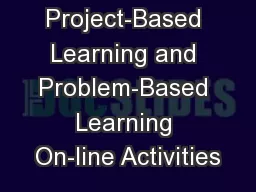PPT-Improving workplace-based learning
Author : calandra-battersby | Published Date : 2016-04-07
an example of preservice teacher education Äli Leijen Liina Malva Pihel Hunt Edgar Krull Tartu Estonia Bert Slof Marieke van der Schaaf Jan van Tartwijk
Presentation Embed Code
Download Presentation
Download Presentation The PPT/PDF document "Improving workplace-based learning" is the property of its rightful owner. Permission is granted to download and print the materials on this website for personal, non-commercial use only, and to display it on your personal computer provided you do not modify the materials and that you retain all copyright notices contained in the materials. By downloading content from our website, you accept the terms of this agreement.
Improving workplace-based learning: Transcript
Download Rules Of Document
"Improving workplace-based learning"The content belongs to its owner. You may download and print it for personal use, without modification, and keep all copyright notices. By downloading, you agree to these terms.
Related Documents














